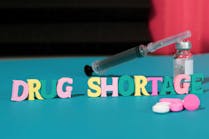Value-based procurement: What’s in it for provider supply chains?
Before life with social distancing and face masks, you may remember that health systems were already straining under the weight of increasing demand and the push towards improved patient outcomes and experiences. All of this was set against a backdrop of limited financial and human resources. To date, healthcare procurers globally have responded to these challenges largely by playing “hardball” with suppliers to drive down product prices.
As time in the COVID-19 capsule progresses, healthcare procurers have continued to flex their procurement muscles by leveraging common tools of the trade, such as standardization, aggregation and price-weighted competitive tendering. As a result, procurement professionals are in danger of becoming victims of their own success.
Essentially, once you’ve won the race to the bottom on price, where do you go next?
Another issue is the limited, if not non-existent, impact of price-based strategies on the numerous emerging supply chain problems highlighted by the COVID-19 pandemic. This healthcare and social crisis has amplified the need for rapid and radical change in the way we deliver healthcare. The key areas in need of special attention include:
• Pathway and patient flow inefficiency – As health systems seek to address the backlog of patients and increased cost of care caused by the cancellation of elective procedures;
• Supply chain fragility – A lack of product demand transparency, supply visibility and price-down strategies have exposed supply networks that are long, have numerous weak links and have tremendous points of vulnerability due to a lack of supply chain investments and increasing consolidated manufacturing in low-cost countries.
• Product saturation – Due to high levels of safety stock accumulated during the crisis, traditional procurement savings workplans will be slowed. Given the stockpiling of products and supplies by provider organizations, there will be fewer opportunities to go to suppliers with a request to reduce product costs across certain categories. This inability to ask for and receive year-over-year product cost reductions will create a gap in hospitals savings plans initially in the post COVID-19 environment.
• Slow pace of innovation – Health systems are now reaching out to the market to identify virtual care, virtual triage and remote patient monitoring solutions that can help keep patients out of the hospital, expedite treatment and radically reduce readmission rates. What this creates is a situation where procurers, who are traditionally risk adverse, are expected to change their behaviors and natural instincts and be more agile purchasing agents that take risks when working with suppliers to adopt innovation quickly to address the challenges of COVID-19. Further complicating this unrealistic expectation of procurers (at least in the short term) is that they lack subject matter expertise and fundamental understanding of these types of innovative solutions for which we’re asking them to spearhead the negotiation process.
• Lack of focus on customer service – We continue to see where patients are no longer willing to make a distinction between industries when considering their experiences. As such patients are holding hospitals to the same or similar standards as they hold their favorite pizza chain or e-tailer. So considering the focus on virtual care to help offset the capacity constraints created by continuing surges in COVID-19 cases, products and services are now being delivered to the home setting or some other setting other than the hospitals. This means that getting the right products, at the right time, and in the right quantity into the “back door of the facility” can no longer be the standard for assessing supply chain efficiency. Hospitals now must reimagine their distribution networks, and this includes how they negotiate and partner with suppliers to assist with the best channels to utilize to ensure the right patient receives the right products, at the right time, and in the right quantity and quality. This could mean negotiating different [Freight On Board] terms for products going direct to patient versus those going direct to the facility. Nevertheless, this challenge is going to require hospitals to take a totally different approach than they’re accustomed to as this new environment creates more direct interaction between procurement professionals and patients than the pre-COVID-19 world.
The adoption of value-based procurement (VBP) is an alternative approach that could significantly aid health systems in addressing these challenges, providing job enrichment for purchasing professionals. How, might you ask? Much of the work in healthcare procurement is largely tactical, routine, and product based. VBP requires a strategic approach, where procurement professionals must think differently, utilize relationship and change management skills. Additionally, procurers will be better able to contribute to health system’s strategic goals (e.g., improved patient outcomes and asset utilization) instead of merely contributing by way of temporal efficiency gains and cost savings. With health systems actively exploring the adoption of VBP in the U.S., Europe and the U.K., such an approach is worthy of consideration. What follows represents an overview of the challenges and opportunities VBP presents to providers. This article is Part 1 of a series in which we will also discuss the challenges and opportunities VBP presents for suppliers, payers and finally patients.
Navigating the VBP minefield
Value-based procurement is essentially life-cycle costing for healthcare. The focus moves to maximizing efficiency across patient pathways from clinging to price/product. The attraction? From a commercial perspective it’s an opportunity to save 10 percent of the cost of a $5,000 procedure rather than 10 percent of a $1,000 product. Operationally, the healthcare facility generates spin off benefits of improved efficiency and throughput by focusing on the patient pathway instead of the product.
So, the question you may be asking is, if this approach is so good and relevant to today’s environment why isn’t VBP common practice across healthcare? Here are two reasons why VBP hasn’t received sufficient traction in provider organizations, although variants of it are successful in other industries.
Take for example, the high-tech and logistics industries. Dell and FedEx agreed to a value-based arrangement in which FedEx Supply Chain would be Dell’s service provider. As part of the initial arrangement, Dell wanted FedEx Supply Chain, by way of its operations and investments in innovation, to continually reduce costs in adherence to Dell’s “every dollar, every year” mantra. FedEx Supply Chain was rewarded for enhancing its profitability through its services, whereas Dell was rewarded for getting the lowest costs. This arrangement proved problematic as FedEx Supply Chain took much of the risk at a set price with no guarantee of return-on-investment within the three-year contract term, and FedEx Supply Chain grew frustrated with Dell’s requests to renegotiate the three-year agreement every six months.
Ultimately, Dell and FedEx Supply Chain entered into a VBP contract that ensured their interests were aligned. The approach added costs to FedEx Supply Chain, but FedEx Supply Chain was amenable to the arrangement because as it helped Dell save money and use fewer parts, FedEx Supply Chain also won. How, exactly, did FedEx Supply Chain win? Dell recognized that its request would be burdensome to FedEx Supply Chain, so Dell agreed to its service provider for investing in innovation and process improvements, as well as offered additional incentives for waste reduction.
Challenge No. 1: Lack of understanding how to sell and buy value
It has been said that ”value is in the eye of the beholder.” With multiple stakeholders across healthcare and non-healthcare industries, the potential scope for interpretation expands. To address this, the first stage for a VBP project is to set out clearly what value means to your health system. This can be achieved by mapping current processes, highlighting areas of challenge or opportunity, the cost associated with the processes and the step change targets that you need to make a difference. For example, in orthopedic hip replacements, saving 30 minutes of OR time could enable delivery of care to additional patients, thereby generating more revenue. Anything less would be an intangible benefit.
Challenge No. 2: Trust
A lack of transparency exists in terms of what health systems value and what suppliers can do to support realization of the value. Unfortunately, the status quo is incentive misalignment wherein which the procurer is incentivized to get the lowest unit cost while the supplier’s representative is incentivized to secure certain volumes and/or at the highest potential price. The result is a “sales pitch” that offers the world at a fraction of the cost (which won’t be realized), while the suppliers experience perceived high-profit margins.
Another supplier tactic that inhibits trust in the buyer-supplier relationship is bundling highly discounted extra services that require buying certain higher-cost/premium peripheral products or the inclusion of support services as a kicker if you hit a specified level of spend. Whether perception is reality or not doesn’t matter. This approach continues to fan the flames of mistrust in the mind of procurers.
Based on our experiences, value-based proposals from suppliers have been viewed by procurers as a ploy for premium pricing but nestled deep within the fine print of accepting ancillary support products, rather than the delivery of innovation and benefit to the health system. On the other side, value-based requests from procurers have come across as scattered and incomprehensible.
The path forward: A CLEAR frame of reference
However, procurers and suppliers can reconcile these points of contention and ensure mutual value by conditioning each party to collaboratively adhere to “CLEAR” principles.
Concise - Information supplied should be concise and follow the guiding elements outlined below.
Linear - Map out the patient pathway and identify the challenges that need to be addressed by the solution and how all stakeholders benefit when successful.
Evidence - Provide references to ”real-world” evidence where the solution has delivered tangible and measurable benefits consistent with the goals of the health system. In cases where the health system is uncertain of what value means, suppliers should use this evidence to help health systems design specific value definitions and metrics.
Avoid - Overstating savings claims/productivity benefits using fractions of time to forecast productivity gains.
Results - State how the improvement in clinical/operational results can be isolated to show a direct correlation to the supplier’s solution.
This approach basically boils down to contracting for value. Though relatively foreign in healthcare, contracting for value is more common in other industries.
McDonald’s is a well-known global brand, but many may not be aware of its unwavering belief that everyone in the McDonald’s “system” (including its suppliers) can and should win. This is at the heart of McDonald’s strategy to consistently contract for value (for all parties involved). In line with this strategy, McDonald’s refuses to conduct business with strategic suppliers on a transactional relationship – but instead insists suppliers have long-term relationships that drive business value and achieve McDonald’s key business outcomes. This continues to result in McDonald’s having set the standards in food quality, safety and assured supply.
For instance, Cargill, one of McDonald’s strategic suppliers, states that “the trust and confidence in the future means we shift a majority of our resources to driving innovation, quality, supply chain optimization and investing in future growth initiatives”. The approach requires a partnership mentality that espouses a “what’s in it for we” mantra, which creates an ideal framework from which to build a value-based procurement program (not just a single contract).
To be successful, health systems, their procurers and suppliers must work collaboratively to CLEARly define the value to be delivered, how improvements (whether direct or indirect) will be attributed to the supplier’s solution/intervention and how this will be measured. Further, simplicity over complexity, transparency over opaqueness, strategic over transactional relationships and leadership within and outside the supply chain function are key to developing long-term value-added partnerships. Maintaining the status quo is not an option if we are to deliver sustainable healthcare for the 21st century and beyond. As Charles Darwin suggested more than 150 years ago, “It is not the strongest of the species that survives, nor the most intelligent that survives. It is the one that is the most adaptable to change, that lives within the means available and works cooperatively against common threats.”
References
1 Coe, E., Enomoto, K., Finn, P., Stenson, J., and Weber, K. (2020). Understanding the Hidden Costs of COVID-19’s Potential Impact on US Healthcare. Retrieved from: https://www.mckinsey.com/industries/healthcare-systems-and-services/our-insights/understanding-the-hidden-costs-of-covid-19s-potential-impact-on-us-healthcare#https://www.ft.com/content/3aab4ef6-6f2b-4726-87aa-40071ad80544
2 Ault, N. (2018). How Mercy Health Consolidated its Supply Chain. Retrieved from: https://www.supplychaindive.com/news/Mercy-Health-care-supply-chain-consolidation/526518/
3 Cavlan, O., Grey, L., Gyurjyan, G., Krych, A., Llewellyn, C., and Zerbi, C. (2018). The European Public Procurement Opportunity: Delivering Value in Medtech. Retrieved from: https://www.mckinsey.com/industries/pharmaceuticals-and-medical-products/our-insights/the-european-public-procurement-opportunity-delivering-value-in-medtech#:~:text=Value%2Dbased%20procurement%20is%20a%20reality%20today%2C%20facilitated%20by%20the,the%20most%20economically%20advantageous%20tender.
4 NHS Supply Chain (2019). An In-depth Look into Our Value Based Procurement Project. Retrieved from: https://www.supplychain.nhs.uk/news-article/value-based-procurement-report-autumn-2020/
5 NHS Wales. (2019). NHS Wales Supply Disruption Support Centre Clinical Testing. Procurement Services
Customer Newsletter. Retrieved from: http://www.nwssp.wales.nhs.uk/sitesplus/documents/1178/Procurement%20Customer%20Newsletter%20Autumn%2020191.pdf
6 Vitasek, K., Manrodt, K., Kling, J., DiBenedetto, W. (2018). How Dell and FedEx Supply Chain Reinvented their Relationship to Achieve Record-setting Results. Retrieved from: https://www.vestedway.com/wp-content/uploads/2018/07/Dell-FSC-long-teaching-case-June-26-2018-PDF.pdf
7 Bradley, R.V. (2019). Healthcare Supply Chain Challenges and Solutions. Presented at Capstone Health Alliance Annual Forum, Myrtle Beach, South Carolina.
8 Vitasek, K., Manrodt, K., and (2012). McDonald’s Secret Sauce for Supply Chain Success. Retrieved from: https://www.vestedway.com/wp-content/uploads/2012/09/McDonalds-Case-Study.pdf
9 Ibid, 3
10 Frydlinger, D., Hart, O., & Vitasek, K. (2019). A New Approach to Contracts: How to Build Better Long-term Strategic Partnerships. Harvard Business Review, 97(5), 116-126.
11 HealthPRO. (2019). Anything is possible: The Southlake Regional Health Centre Innovative Procurement Experience. HealthPRO News. Retrieved from: https://www.healthprocanada.com/anything-is-possible-the-southlake-regional-health-centre-innovative-procurement-experience.
Brian Mangan
Brian Mangan serves as Director, Brian Mangan Associates, Liverpool, UK.
Randy V. Bradley
Randy V. Bradley, Ph.D., serves as Associate Professor of Information Systems and Supply Chain Management, University of Tennessee, and Executive Vice President, Digital Transformation for Life Sciences, Bio Supply Management Alliance, Knoxville, TN. Bradley earned the 2020 Dean S. Ammer Award for Healthcare Supply Chain Performance Excellence by Bellwether League Foundation’s Hall of Fame for Healthcare Supply Chain Leadership.





